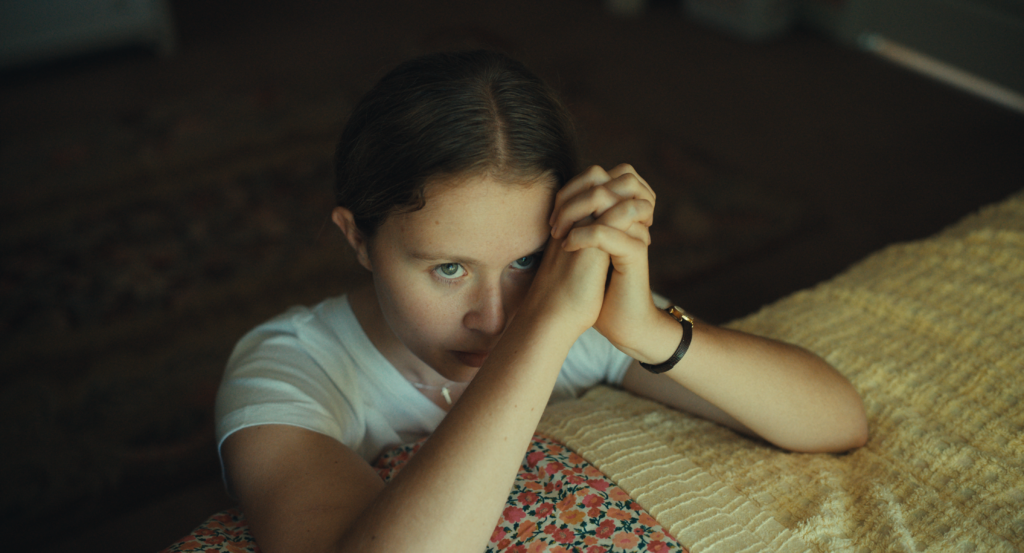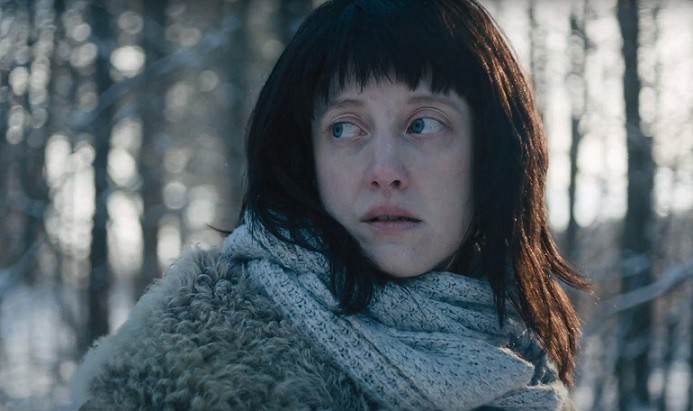Laura Dunn started making documentaries in response to her undergraduate experience at Yale University. Through a chronicle of labor strikes on campus, “The Subtext of a Yale Education” examines the corporatization of higher education. Dunn’s honors include a Rockefeller Media Arts Fellowship, Student Academy Award, Yale’s Trumbull Fine Arts Prize, International Documentary Association Pare Lorenz Grant, and an Independent Spirit Truer Than Fiction Award. (Press materials)
“The Seer” will premiere at the 2016 Hot Docs Film Festival on May 4. The film, which had its world premiere at SXSW, is co-directed by Jef Sewell.
W&H: Describe the film for us in your own words.
LD: I think of “The Seer” as a portrait of my favorite writer, Wendell Berry. Its composition, as it reflects the nature of Berry, is necessarily contrarian in that the film is much less about how the world sees Berry than it is about how Berry sees the world. Rootedness to place is a key theme that weaves throughout all of Berry’s work — fiction, non-fiction, and poetry — and so “The Seer” ethnographically documents Berry’s home of rural Henry County, Kentucky.
Family farmers, young and old, reflect both a love for land and the complex economic/ideological struggle to stay there. Hundreds of intimate and never-before-seen photographs of Berry and his family through the years, archival footage documenting the rise of industrial agriculture, excerpts from various Berry writings, and a series of original wood-engravings poetically frame the landscapes and farmers’ stories, ultimately asking the viewer to wonder how to engage the quiet and the old more deeply.
W&H: What drew you to this story?
LD: I’ve known Wendell Berry’s work since high school. But it was at my EP Terrence Malick’s urging, when working with him on my first feature, “The Unforeseen,” that I revisited Berry.
I ended up choosing a poem of his to use in that film, and he so graciously allowed me to record him reading it. We interweaved that poetry reading throughout that film. When we toured the film to festivals and beyond around the world, I was surprised to learn how few people had heard of Berry. So I wanted to make a film that would point folks to his books.
W&H: What do you want people to think about when they are leaving the theater?
LD: I want them to want to turn off or away from the screen and go outside for a walk. I want them to want to read more, especially Wendell Berry books. I want them to be inspired to slow down and spend more time with their children, teaching them to “look and see” all that is around us.
The last thing I want them to be thinking about is the filmmaking. My hope is that the film will make them engage in their own home landscape.
W&H: What was the biggest challenge in making the film?
LD: Having many young children during the course of making the film. When we started, my husband Jef — the co-director, producer, and visual designer on the film — and I had two kids, a three-year-old and a baby. I gave birth to four more children during the making of the film (now five-year-old twins, a newly-minted three-year-old, and a six-month-old baby).
We brought them all on location with us to Kentucky, so I was always working what felt like two or three full-time jobs, keeping up with details both domestic and professional. Then, since I really need time with my kids to feel right, I edited the film almost entirely in the middle of the night while they slept. The fatigue from that schedule was the hardest part of this project.
W&H: How did you get your film funded? Share some insights into how you got the film made.
LD: Grants — Sundance Doc Fund was first, then IDA [International Documentary Association],and Austin Film Society. Lots of donations from foundations, individuals, and finally a successful Kickstarter at the finish. I always tell folks the key to getting funding is to just get started.
I put together $10,000 through two people who really wanted to see the film made. We took that and did a three day shoot with low-end cameras in Kentucky. From that, I cut a three minute teaser which lured in some more donations. We did another shoot, this time with an Arri Alexa [camera] and a full (that means four person, here) crew. I edited that footage into a 22-minute demo reel that helped win additional support. Lots of starting, cutting, fundraising.
W&H: What’s the biggest misconception about you and your work?
LD: Gosh, I really have no perspective on that!
W&H: What’s the best and worst advice you’ve received?
LD: [The best advice was from] Terrence Malick who told me not to simply chronicle what happens, but to ask what the forces are behind what’s happening. What are the forces making it so? He also told me not to edit simply in a chronological order but rather to find scenes and material I like and start building scenes there. To edit like a piece of music — allowing little melodies to come in and out.
[The worst advice was] “Laura, you don’t know how to tell stories. You need a main character, a three-act structure…”
W&H: What advice do you have for other female directors?
LD: Don’t ever feel like you have to copy the way men do it in order to find acceptance of your work. Allow the feminine worldview — whatever that may mean to you — to seep into all you do. For me, the emotional part of seeing and the intuitive way of relating to others are key.
W&H: Name your favorite woman-directed film and why.
LD: I have great respect for Barbara Kopple. Her film “American Dream” strongly influenced me when I first saw it while in college studying American studies and documentary film. She pioneered new ways to use film to render complex social issues and advocate for change.







